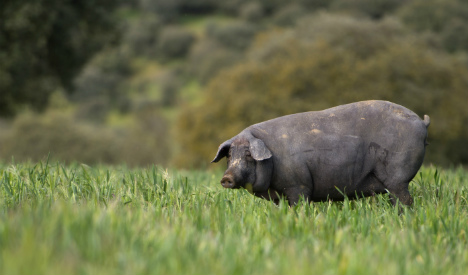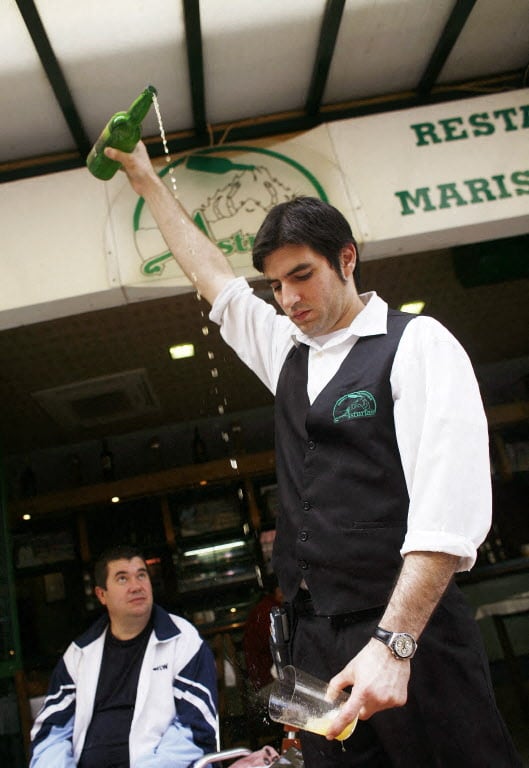The Biofach organic trade fair in Nuremberg, Germany has just named the best ham in the world – and it is Spanish.
The ham, made from the extremely rare Manchado de Jabugo pure breed, is farmed by Eduardo Donato, a Catalan who has lived in Huelva, southwest Spain, for 26 years.
Ten ham-azing things you really need to know
Donato sells only around 80 ham legs a year because of the rarity of the breed; there are fewer than 100 Manchado de Jabugo left which makes the ham it produces the most exclusive – and expensive – in the world, at an eye-wateringly pricey €4,100 ($4,500) per leg.
But Donato told Spanish daily El País that he rejects the term “most expensive” and prefers to class his ham as the “most valuable” because what ends up on the customer’s plate is the result of years of “patience, passion and pleasure”.

The Iberian Black pig is allowed to roam freely outdoors. Photo: AFP
Donato’s Manchado de Jabugo’s are 100 percent organic; they roam freely outdoors among woods of oak trees, eating only the acorns that fall to the ground.
Whereas regular pigs are ready for slaughter after 14-18 months, the Manchado de Jabugo takes a leisurely three years to reach optimum size, and few breeders have the patience to wait so long to reap the rewards.
After the pig has been slaughtered, there is an even longer wait in store while the meat cures – around six years.
Altogether it is around a ten year process from when the animal is born to when it ham is sliced.
Spaniards were shocked to discover recently that their unofficial national food could cause cancer, after a World Health Organization report linked the consumption of cured meats to higher levels of the disease.





 Please whitelist us to continue reading.
Please whitelist us to continue reading.
Member comments